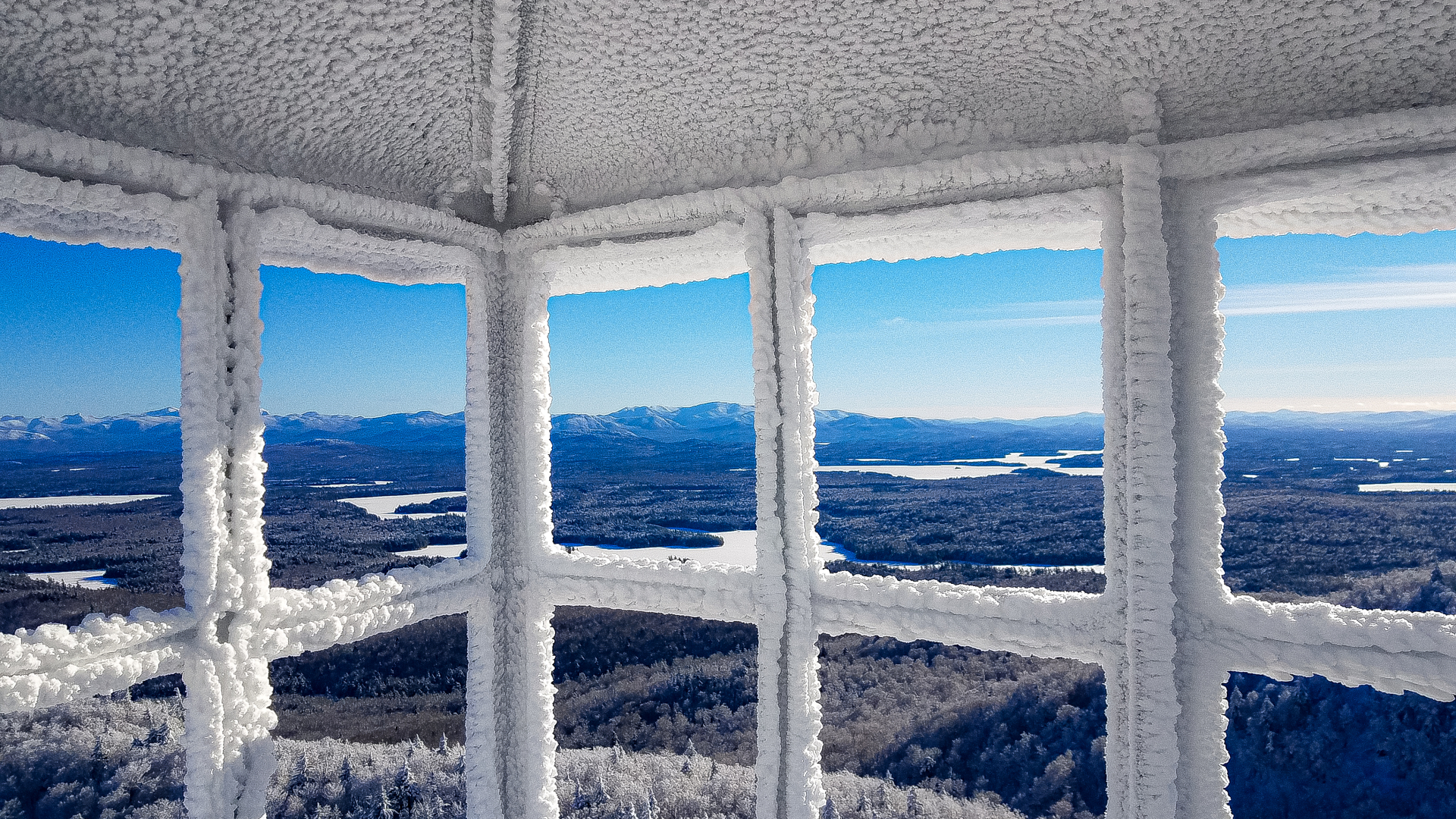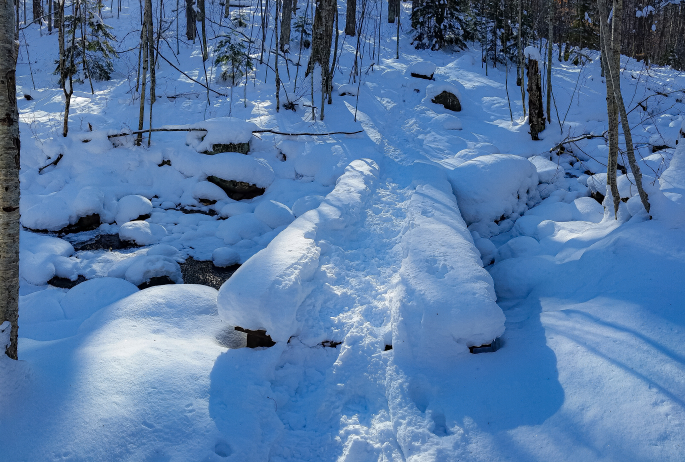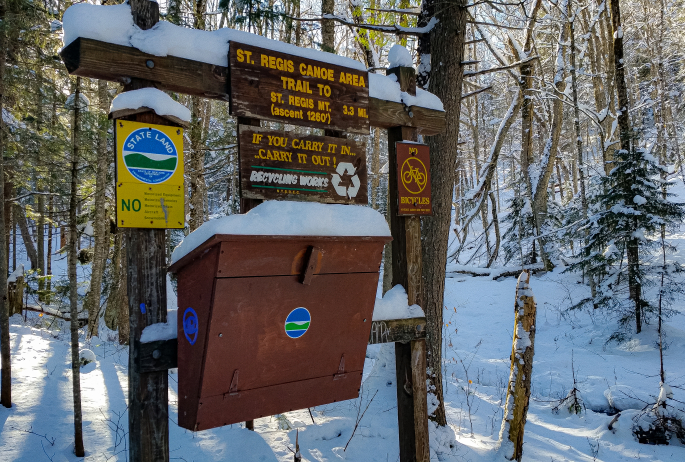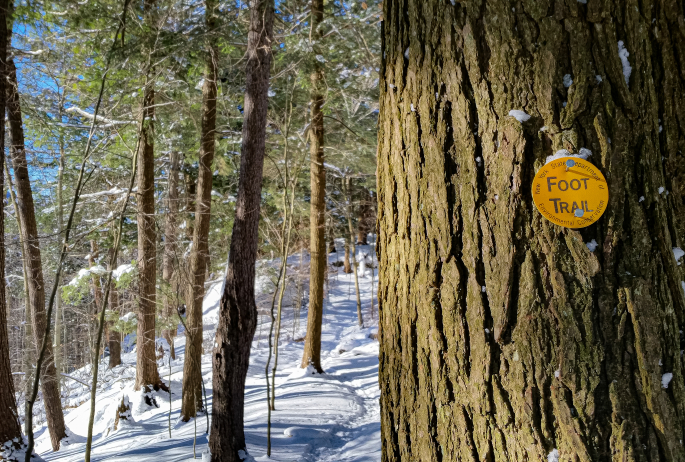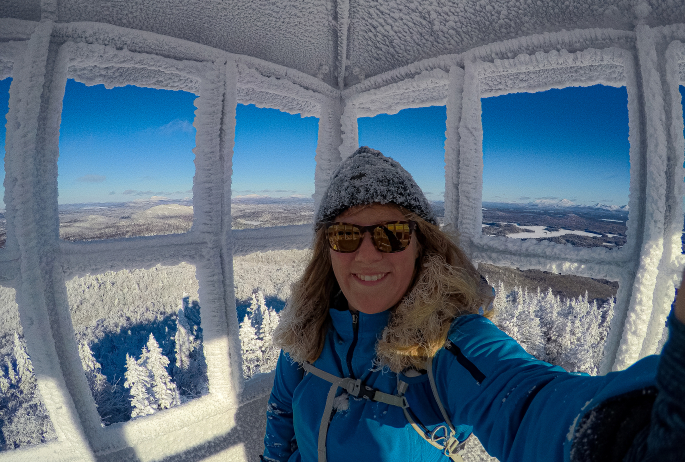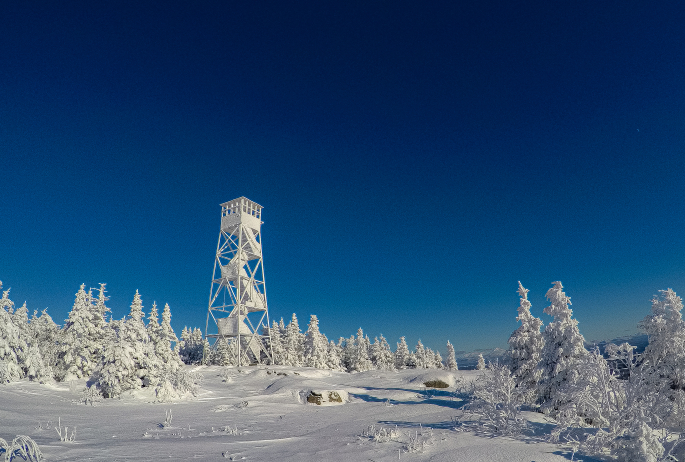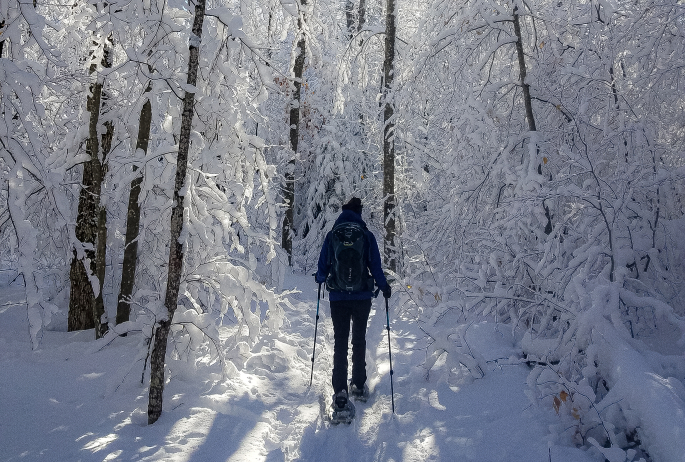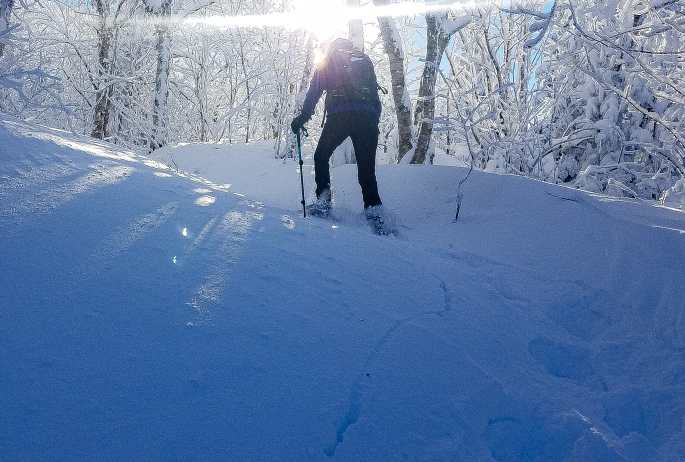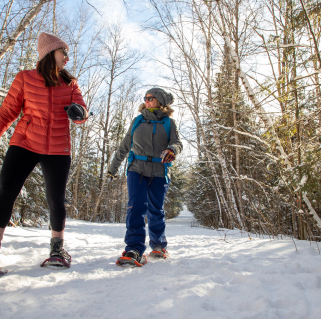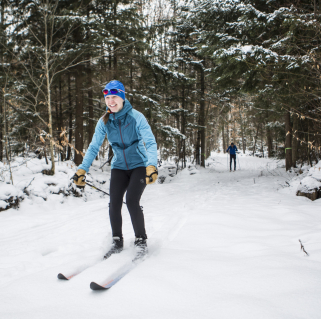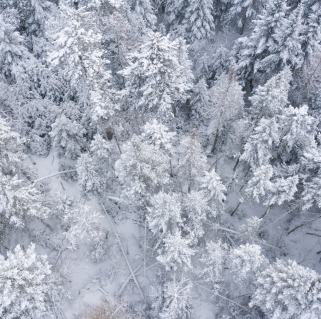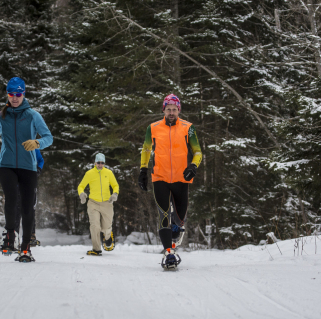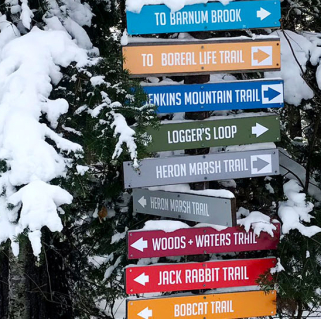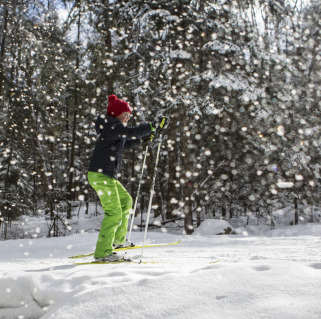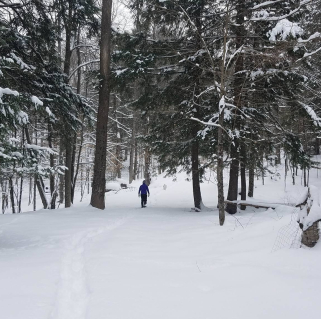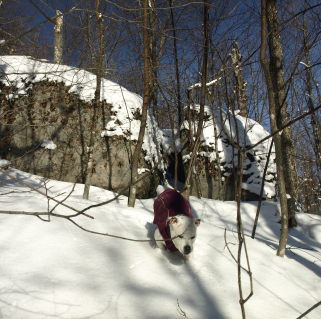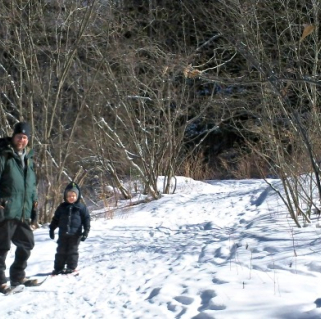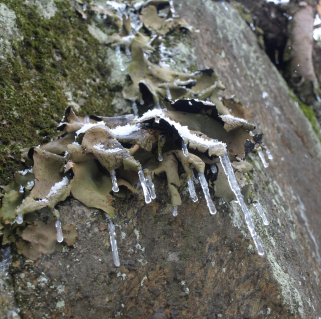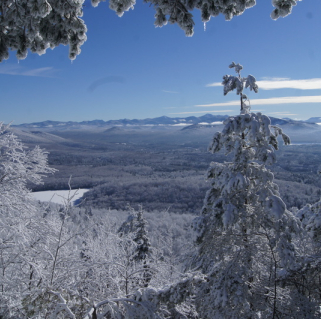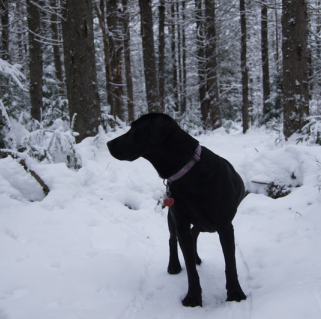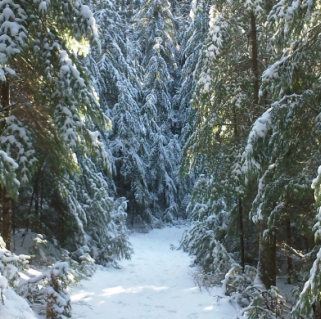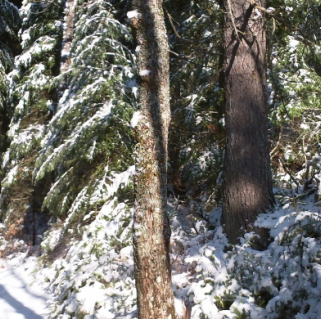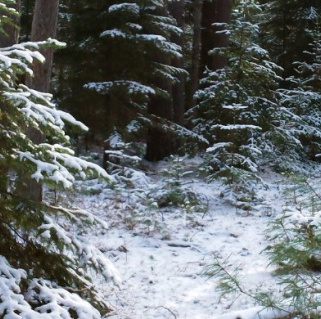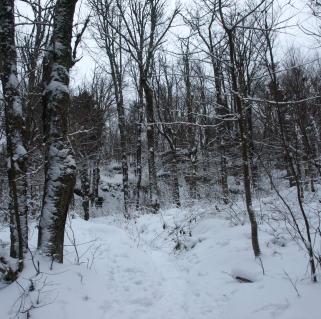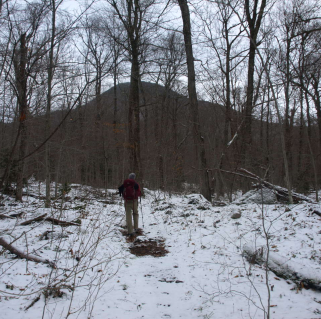When the snow is right, there is nothing better than a snowshoe hike up a mountain. And Saranac Lake has a few options that will satisfy any snowshoer.
Looking in all directions just north of town, a few mountains rise above others on the horizon: Whiteface, McKenzie, and, of course, St. Regis.
St. Regis Mountain stands as a watchful sentinel over the St. Regis Canoe Area, where pristine ponds and unspoiled forests beckon recreationalists all year round. Atop the mountain is a fire tower; it’s been there for over 100 years. With a rich history, this mountain has something for everyone. And in the winter, a layer of snow gives it a magical touch.
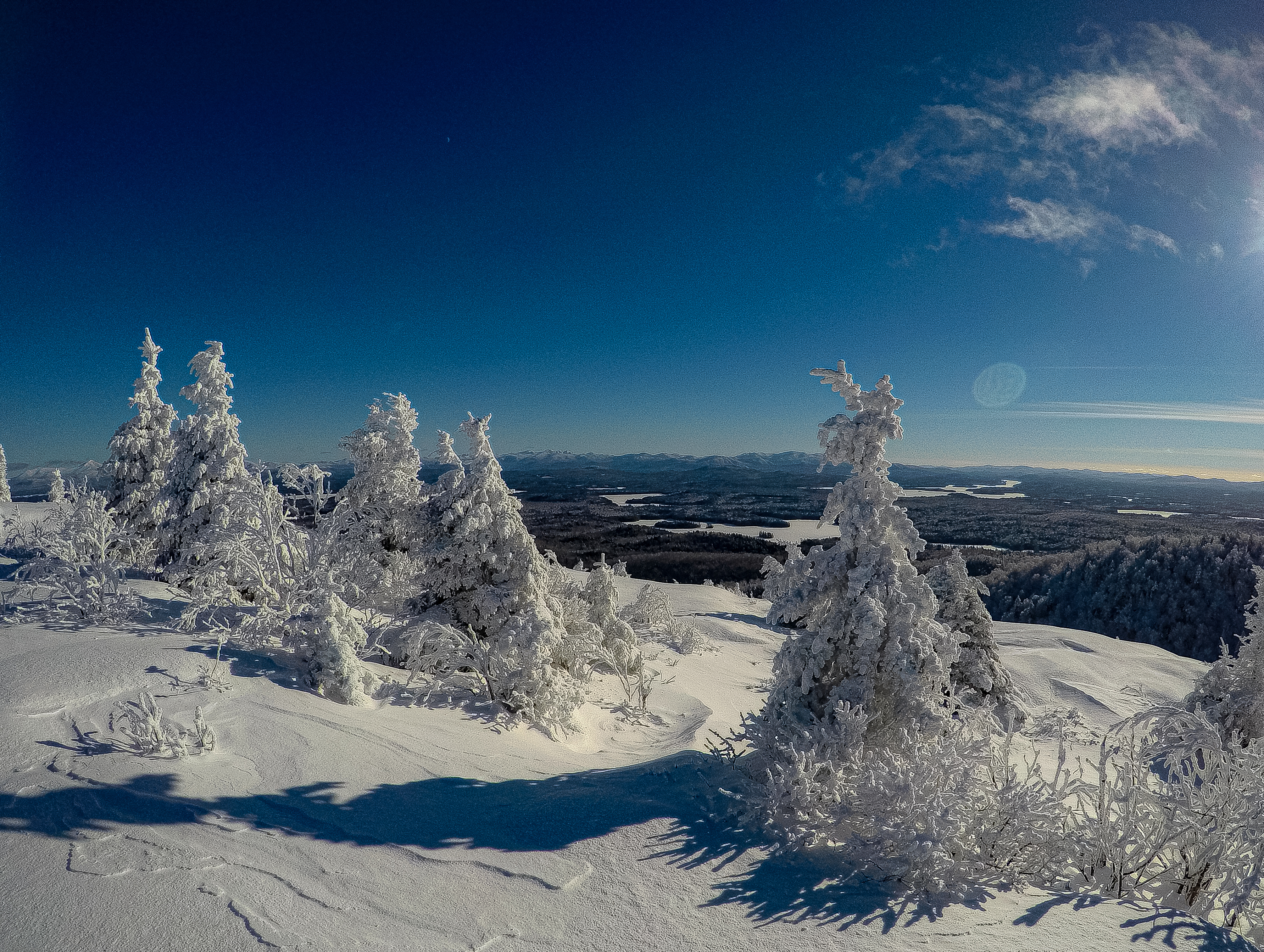
A walk through history
The beauty of St. Regis Mountain is a draw for many visitors: from the sprawling St. Regis Lakes Chain to Tupper Lake, there is absolutely no shortage of spectacular views, many of which include waterbodies. But perhaps more famous than the iconic views is the fire tower. Built in 1918, this structure housed a fire observer during fire seasons until 1990. Their job was to scan the surrounding landscape for smoke and report possible forest fires. The station on St. Regis was just one in a vast network. (Perhaps you’ve climbed other fire tower summits.) In the early 1900s, two devastating fires swept across the region, affecting over 800,000 acres in total — that’s almost 15% of today’s Adirondacks. Today, fire towers remain throughout the Adirondacks as out-of-doors museums, places where hikers can take a step back in time.
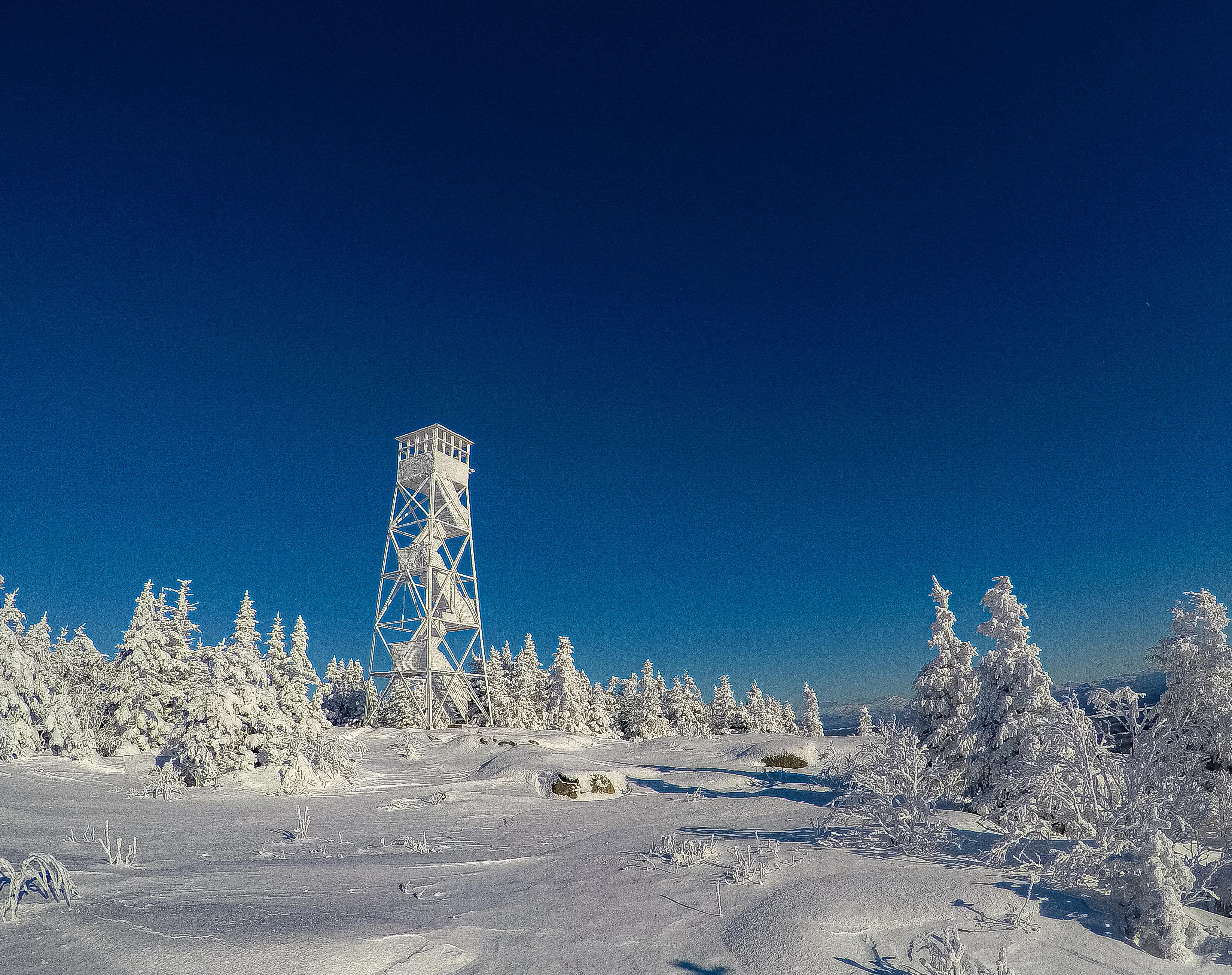
Where it all begins
The trail up St. Regis starts a few minute’s walk from the parking lot off Keese Mills Road. A register marks the start of the foot trail. Be sure to sign in and out. Immediately after signing in you’ll cross a bridge and head up a hill. It’s 3.3 miles to the summit, and most of the terrain is gentle. On our hike, the temperature may have propelled us up the trail a little quicker than usual. It was barely above 0 degrees, but the sun was shining and the snow glistening in its glow. For just over 2 miles, we made our way over rolling hills and enjoyed the solitude. No one else was on the trail.
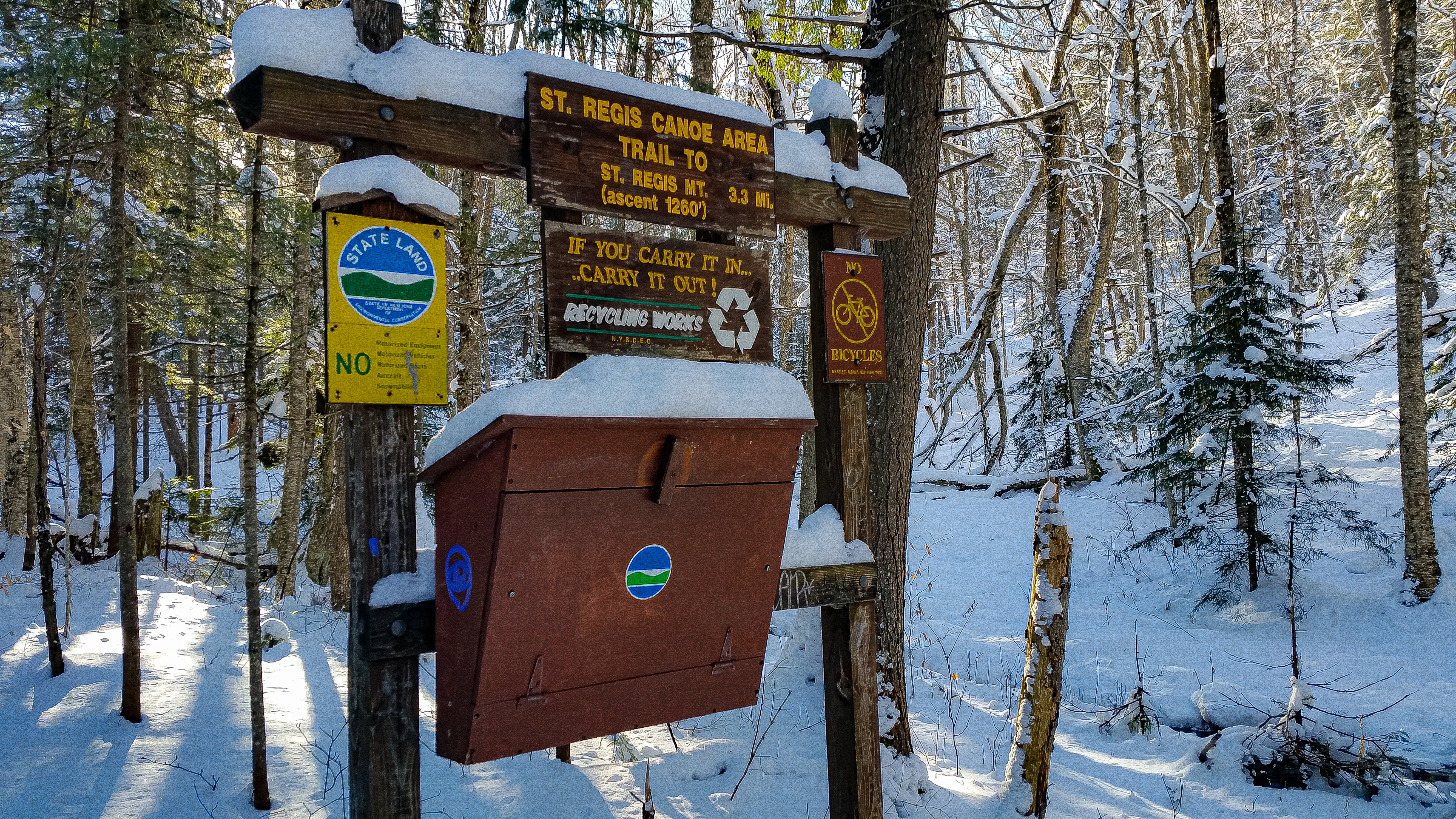
Around the 2-mile mark, the trail reaches another bridge. Near this spot used to be the fire tower observer’s cabin. Today, it’s a designated campsite.
After this bridge is where the climbing really begins. From this point, it’s around a mile to the summit. In summer, the steeper trail is made a little friendlier with well-maintained stone steps and other features, but in winter, those are covered by snow. My hiking partner and I noted how helpful our snowshoes were while traversing this section. They became even more helpful around 0.3 miles from the summit. To this point, the trail had been broken out, but the hiker before us had turned around shy of the summit, leaving nothing but deep, fresh powder between us and the top. Breaking trail is no joke but thankfully we didn’t have far to go, and, with two of us, we had the option to take turns in the lead.
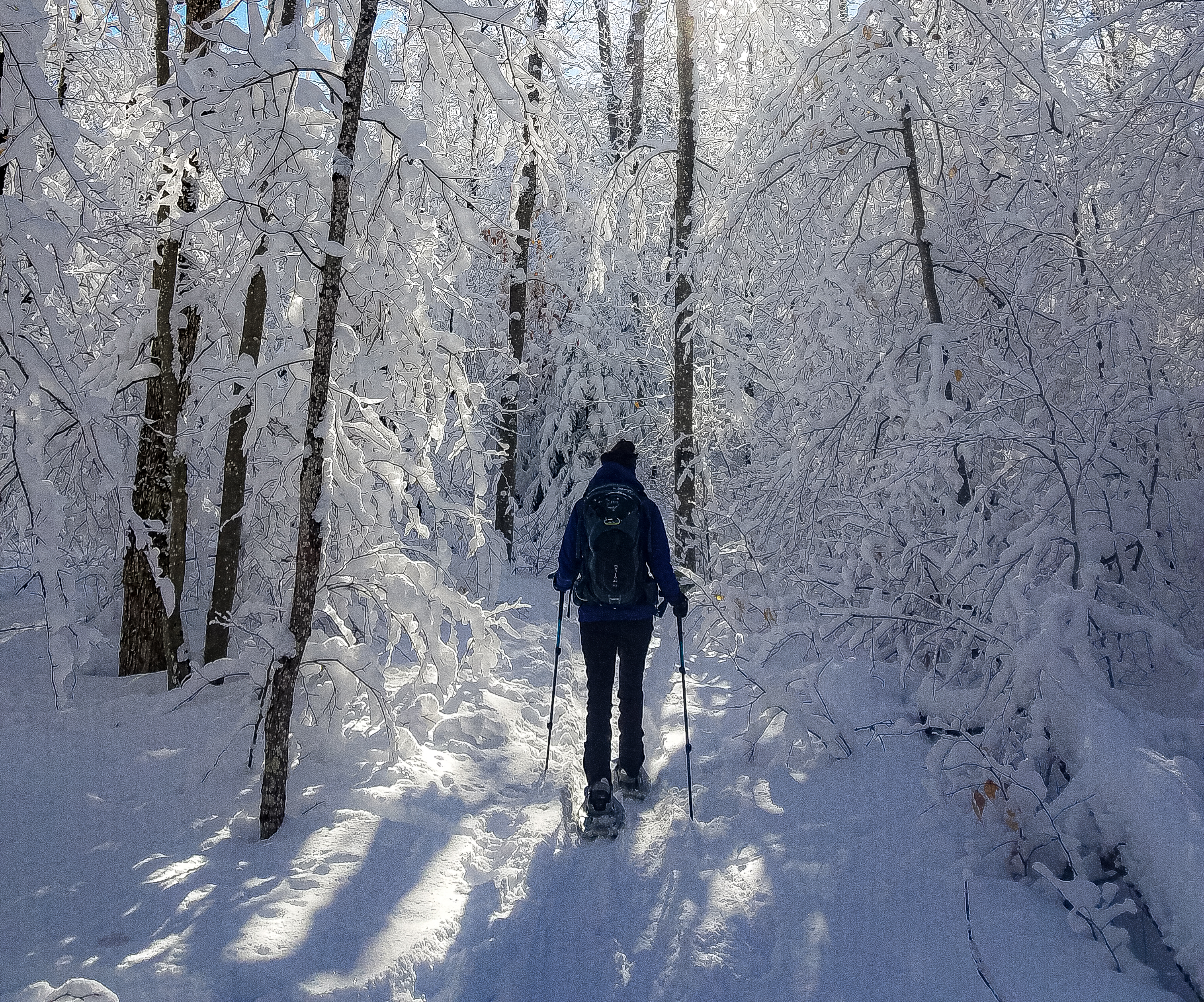
Fire on the mountain
Even though we ended up breaking trail, my friend and I were clearly not the first people to climb the mountain. According to researcher John Sasso, the current trail from Keese Mills Road may have been laid out in the summer of 1926, though the steel fire tower was built eight years prior. The fire tower itself still stands today, and hikers can even ascend the 35-foot tall staircase to take in the views from the cab. You don't need to climb the tower to see views: the southern summit is open, but in order to see the wild lands to the north, you'll need to climb the tower. While in the tower, see if you can locate Azure, Debar, Ampersand, and Whiteface mountains. These were all once part of the fire tower network, though only Azure Mountain still has a tower today.
In winter, it’s important to take off snowshoes or traction devices when climbing the tower; these can damage the steps that volunteers worked hard to restore. Rails and caging are there for your support. The day we hiked, rime ice coated the tower. Rime ice forms on the surface of objects when fog freezes. Today that meant the tower looked like it was painted white; contrasted with the deep blue sky, it couldn’t have been prettier.
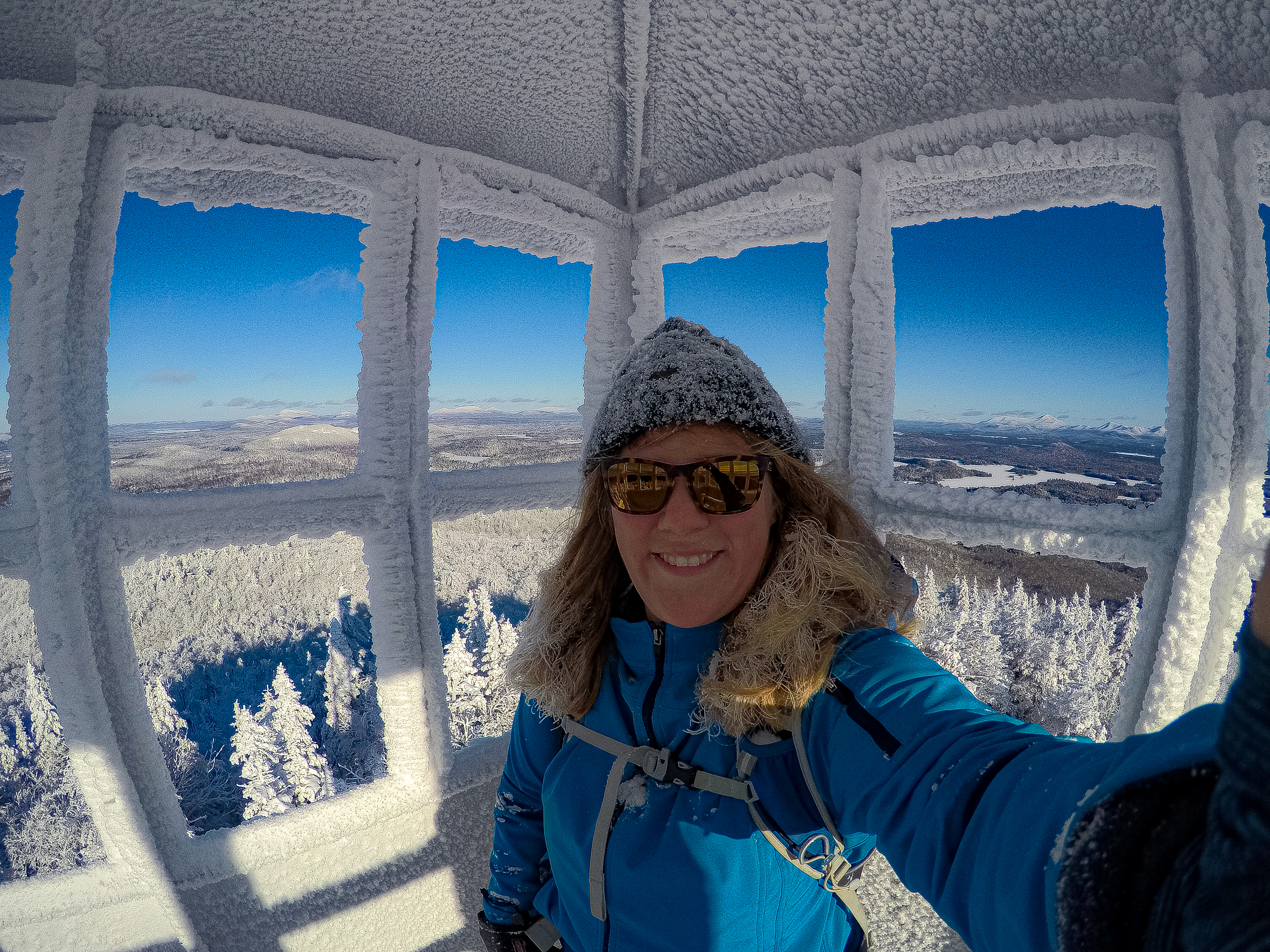
Snowshoeing St. Regis Mountain will definitely leave you eager to get out on your next adventure! Head back into town after your trip to refuel with a warm meal or spend the weekend checking off mountains while you finish the Saranac Lake 6er challenge. For more snowshoe fun, come to town for the Adirondack Snowshoe Fest for a celebration of all things snowshoe! This event will have live music, demos, races, and more!
How to get there
From downtown Saranac Lake, head west on Route 86, toward Paul Smiths. At the four-way intersection with Paul Smith's College, turn right on Route 30 and take the first left on Keese Mills Road. Follow Keese Mills Road for just under 3 miles to the trailhead parking on the left.
